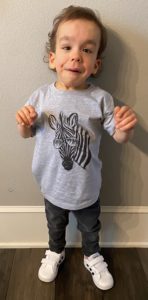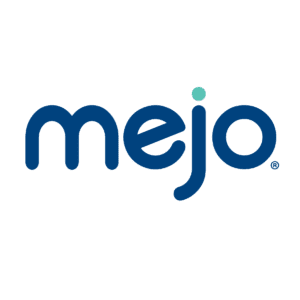“My son has Costello syndrome, but he is not defined by his diagnosis,” Ryan Sheedy tells me about his son, Reynolds. To Ryan, his statement exemplifies his beliefs about needed changes in the medical realm: humanizing data and making children more than just their diagnosis. Now, Ryan and his wife, Ashley Gibbs, are on a journey to “put me back into medicine” through mejo.
Developed to help parents of medically complex children and children with rare diseases, mejo is a tool which helps to organize medical and personal information to create personalized, tailored medical journals.
Recently, Ryan and I sat down to discuss Costello syndrome, the need for more person-centric care, and the process of developing mejo.
About Costello Syndrome
Costello syndrome is a very rare genetic condition, under the umbrella of RASopathies, which results from HRAS gene mutations. In many cases, these mutations occur de novo (spontaneously). HRAS mutations cause the production of an abnormal H-Ras protein, which allows cells to continuously grow and divide. Ryan explains that there are only around 1,000 people in the world who have been diagnosed with Costello syndrome.
This rare disorder affects many bodily systems. Symptoms and characteristics can (but do not always) include:
- Feeding difficulties
- Larger than average size at birth, followed by slow growth and culminating in a short stature
- Arrhythmia
- Hypertrophic cardiomyopathy
- Hypotonia (low or weak muscle tone)
- Skeletal abnormalities
- Cognitive and developmental delays
- Hyperflexible joints
- Loose folds of skin, particularly on the hands and feet
- Increased risk of neuroblastoma, papilloma, or rhabdomyosarcoma
- Chiari I malformation
The Diagnostic Journey
Ryan and Ashley were thrilled when they learned that Ashley would be having twin boys: Campbell and Reynolds. During the course of the pregnancy, everything seemed to be progressing relatively normally. Ryan explains:
The twins were different in size, but we really had no idea that there was anything going on.
However, some concerns did pop up once the twins were born. In addition to supraventricular tachycardia, Reynolds was having major airway concerns. Doctors were concerned about his ability to eat, as well as to breathe. Ryan shares:
At the time, we definitely wondered if there was some sort of root cause to everything that was going on. But we were more focused on working on and treating the things that were presenting themselves to keep Reynolds alive.
From birth, Reynolds was placed into the NICU, where he spent 100 days. Ashley and Ryan were thrilled to finally be able to bring him home after that. But even at home, they noticed a number of potential issues. Reynolds had hypothyroidism and was showing signs of growth issues, difficulty feeding, and failure to thrive. The family began seeing different specialists to learn how to manage these issues.

Then, when Reynolds was around nine months old, his parents took him to see a geneticist at Arkansas Children’s Hospital. After undergoing a whole genome study, Ashley and Ryan finally received their son’s diagnosis when he was 18 months old: Costello syndrome, with a G12F variant.
Trying to Discover Costello Syndrome Information
Immediately, Ashley and Ryan’s brains flooded with questions. What was Costello syndrome? How was it managed, and what was the prognosis? What did this mean for Reynolds’ future? Unfortunately, given the rarity of the disease, and also a general lack of understanding in the medical community, Ashley and Ryan were not really given the answers to many of their questions. Ryan explains:
We had to do a lot of research on our own. I’ve found that it’s not common to be told this information. Parents are left to the internet to come up with questions for when they meet the geneticists.
Luckily, Ryan and Ashley’s research was fruitful. In addition to finding information through organizations like NORD, they found support from the Costello Syndrome Family Network (CSFN). Within just 24 hours of reaching out to CSFN, Ashley and Ryan got a reply. Ryan shares:
Someone called us and gave us a rundown of all things Costello. That was a super helpful and encouraging conversation because it wasn’t what we were reading on the internet. She brought to our attention that kids with Costello are predisposed to cancer and we need to get early cancer screenings. So we were able to go back to the geneticist and say, ‘Okay, he needs to do early cancer screenings. He needs to have neurological screenings to check for Chiari or tethered cords.’
Throughout his life, Reynolds has undergone skull and airway reconstruction and spinal cord surgery, and has 25 specialists. Managing all of the information and care has sometimes been overwhelming. Says Ryan:
Navigating all of the doctors, therapy, feedings, and other needs was pretty complicated. I was coordinating surgeries, scheduling doctor visits, taking him to therapy, and putting together a game plan because none of the doctors talk to each other. When Reynolds was in the NICU, I realized very quickly that there wasn’t a tool built for caregivers of medically complex children. So that was kind of the genesis of why I created mejo.
In Part 2 of our story, we will discuss what mejo is, how this platform was developed, the plan for the future, and Ryan’s advice for other families within the rare disease and medically complex communities.







